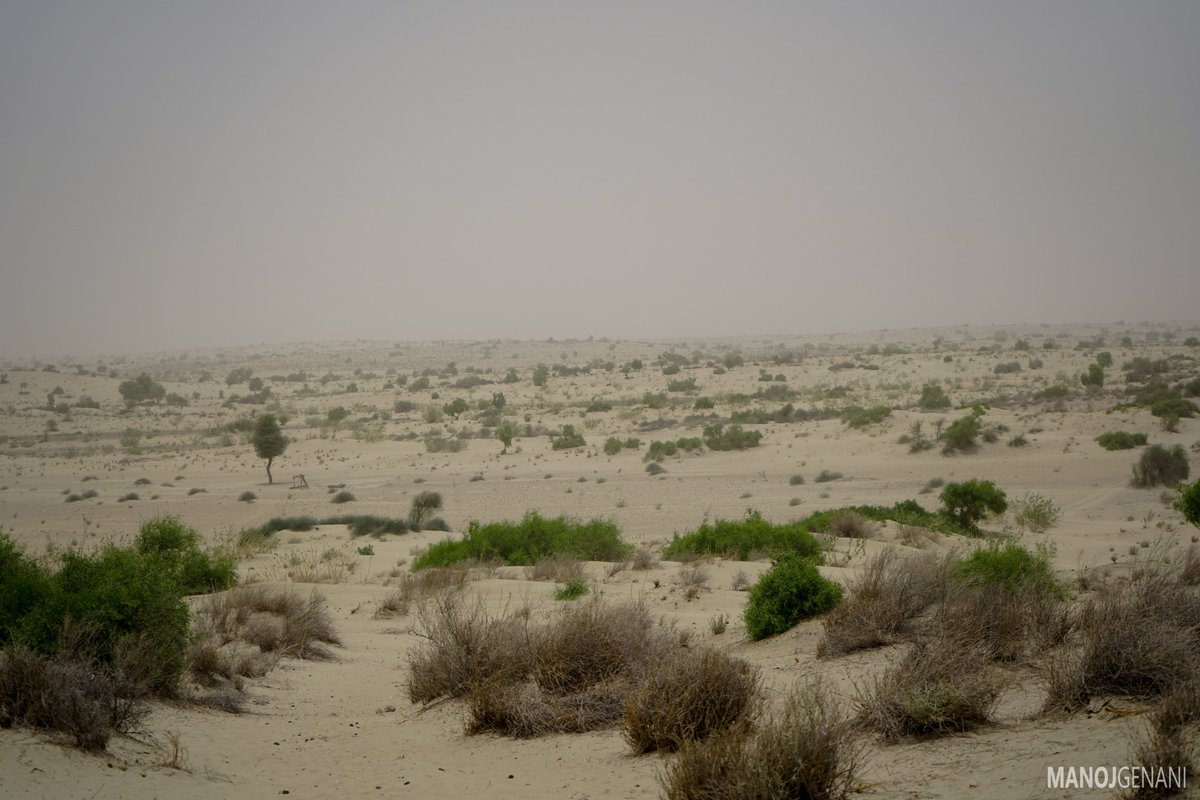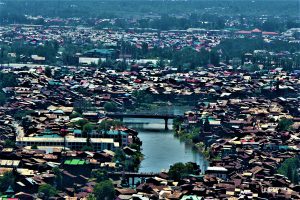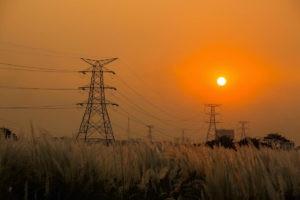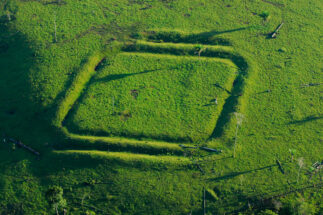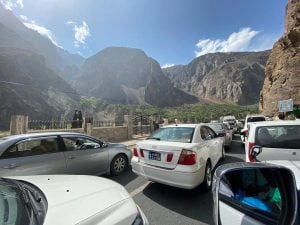Ravindranath lives in the heart of the Thar desert in India. He and his family are agropastoralists – people who grow crops and rear livestock – in the village of Kalu in Bikaner district, Rajasthan. But the dry grasslands that people like Ravindranath have depended on for centuries for pasture are slowly being depleted.
“Sometimes we have to pay money and buy cattle feed [instead of grazing our animals],” he said.
Debulal Bawri, a gram panchayat (village council) officer for Kalu, explained that in Bikaner and other districts in the state of Rajasthan, “rainfall has become unreliable and [herders and farmers in the area] rely a lot on monsoon rainfall.” As of August 17, this year’s monsoon in Bikaner is 23% deficient in rainfall.
“Monsoons have been erratic [in this region] over the past few decades and pasture productivity is dependent on good monsoons,” said Sutirtha Dutta, a research associate at the Wildlife Institute of India (WII).
See: Rajasthani women farmers combat climate change in the desert
A “good monsoon” in Bikaner means between 200-300 millimetres of rain between June and September. More erratic monsoons mean there is often a high amount of rain over fewer days.
Another problem, Bawri said, is that “many buildings are coming up on pastures”.
Rewant Jaipal, a programme manager at NGO the Urmul Trust, said that pastures across Bikaner are shrinking due to the growth of agricultural farms and the expansion of built-up areas because of population changes.
But there is hope to arrest the decline.
In December 2019, efforts began to revive pastures in Kalu, as well as the villages of Kelan, Dhani Bhopalaram and Rajasar Bhatiyan in Bikaner. The project focusses on planting trees such as ber, khejri and moringa, and grasses like sewan and daman on grazing land.
In cases where local grasses like sewan, daman and phog are already present, the programme ensures that they remain in the landscape, said Jaipal, who has been leading efforts on the ground.
The initiative is part of a programme by the National Rainfed Area Authority. It is being coordinated by India’s Union Ministry of Agriculture and Farmers Welfare, the United Nations’ Food and Agriculture Organization and the Urmul Trust, with support from the Desert Resource Centre.
Ravindranath is employed by the programme under the Mahatma Gandhi National Rural Employment Guarantee Act, 2005. This legislation guarantees 100 days of employment per year to every rural household in India. “The work that we are doing today… I have a feeling that we will see its benefits in the next few years,” he said.
![Desert ecosystems have been neglected for over a century in India's Thar desert [image by: Rewant Jaipal]](https://dialogue.earth/content/uploads/2020/08/Thar_desert_India_Rewant_Jaipal_2.jpg)
![Rural employment guarantee schemes are being used to restore desert ecosystems in the Thar [image by: Rewant Jaipal]](https://dialogue.earth/content/uploads/2020/08/Thar_desert_India_Rewant_Jaipal_1.jpg)
Misher stressed that while tree species like ber and khejri are native to the region and have evolved to survive with historically scant rainfall, the same is not true for non-native ones like moringa. “During monsoons, we hardly get 15-20 days of rainfall and this year has been worse,” he added. Other experts also warn that moringa, which might not survive in the region, should not be planted because it is not native.
Dutta, from the WII, also supported the planting of native vegetation. He said that native grasses and shrubs like sewan and capparis in low densities can support livestock while maintaining the integrity of the desert ecosystem.
But this restoration effort is an exception. The Thar is a victim of unscientific practices that have destroyed pastures.
![Cultivation in arid areas between Phalodi, Phokran and Jodhpur Credits: Processed by Raj Bhagat P using Google Earth Engine; Data: LandSat (USGS)]](https://dialogue.earth/content/uploads/2020/08/Vegetation_trend_in_Rajasthan.png)
Colonial policies devastated the Thar
“The Thar is a climatic desert,” said Ninad Munagi, another researcher at the WII. This means that the region is very hot, with very low precipitation.
Historically, policies have sought to “green” the desert and its surrounding areas via cultivation and plantations. This was rooted in the thinking that deserts were inherently “unproductive”. Colonial rule was focussed on higher revenues, and farms were easier to tax.
![Historically, policies have sought to "green" the desert [image by: Rewant Jaipal]](https://dialogue.earth/content/uploads/2020/08/greening_Thar_desert_India_Rewant_Jaipal.jpg)
The problem, Misher said, is that “greening started with people thinking, ‘How do we make deserts productive?’ not, ‘Let’s understand what a desert is.’”
See: Tending orchards in Pakistan’s Thar desert – without flowing water
“Planting trees in deserts is as bad as cutting trees in a rainforest since it changes the basic nature of the ecosystem,” said Abi Vanak, a senior fellow and convenor at the Centre for Biodiversity and Conservation at ATREE. He added that the purpose and scale of plantation activities should always be scientific and specific.
Greening has largely occurred on arid scrub savannahs that also functioned as pastures. As well as hurting herders’ livelihoods, many species of animals and plants that have adapted to such climates are now threatened.
The trend is also linked to recent locust outbreaks, as large quantities of vegetation provide food for locust swarms. The greened areas act as pit stops in deserts, allowing them to reach previously unfrequented regions like Delhi, Maharashtra and Madhya Pradesh.
See: Pakistan turns locust threat into chicken feed
Though such greening is not a new phenomenon, the rate has picked in the past few decades.
The type of plants in the desert has also changed. Under colonial rule, the British planted woody species because of the demand for timber (which is still strong today).
“In the case of deserts, we know that planting woody species leads to retention of soil moisture in the ground substrate. In the long term, this can facilitate colonisation by many other species,” the WII’s Munagi said.
After India gained independence in 1947, successive governments continued these irrigation, cultivation and plantation policies. In the 1980s, the Indira Gandhi Canal project, a vast irrigation scheme, led to extensive crop cover in the Thar.

Many areas that were irrigated under the project are now infertile. “There’s no natural outflow of water,” Misher said. This has led to waterlogging and land becoming too saline for agriculture.
Invasive species colonise the Thar
One of the biggest reasons for pastures shrinking across Rajasthan and surrounding areas in the Thar is the practice of planting invasive species.
The most notorious among such species is prosopis juliflora, a tree from Central America, likely introduced to the Thar between 1980 and 2000. The plant is a “nitrogen-fixer”, said Vanak. This means that it increases nitrogen levels in the soil, so they are not ideal for native plants adapted to nutrient-deficient soils.
Vanak explained that by planting prosopis juliflora and enriching the soil with nitrogen, “you are allowing plants that thrive in such soils to come in and outcompete local species”.
Another example is acacia tortilis, a tree native to the African savannah. This was planted in Rajasthan in the name of “sand dune stabilisation”. But this failed to consider animals like sand grouse and certain lizards, which prefer to burrow in loose sand.
Species like prosopis juliflora and acacia tortilis are not compatible with the wildlife of arid and semi-arid regions. The blackbuck, great Indian bustard, chinkara gazelle and spiny-tailed lizard “prefer open habitats to detect predators and prey… the numbers of these wildlife species started decreasing,” Dutta said. He added that in areas where plantations took hold and where water seepage from irrigation was prominent, “species like the nilgai [Asia’s largest antelope] that prefer wetter conditions expanded… this disrupts ecological balance”.
Dutta said that the removal of invasive species “will open up tremendous amounts of land” that could be restored into grasslands.
Does greening bring rain?
“In deserts, ‘green’ is usually considered divine,” Munagi said. Due to this belief, greening programmes are undertaken even at the local, village-council level.
“Our forefathers have told us that greening brings rainfall,” Bawri said.
But a direct link between greening and rainfall in arid and semi-arid regions in western India has not yet been proven.
“Large-scale greening in Sahel [the region south of the Sahara in Africa] has feedback impacts on rainfall in the region,” said Jagdish Krishnaswamy, a senior fellow at the Suri Sehgal Centre for Biodiversity and Conservation, ATREE.
But there is no evidence yet that it has an impact on rainfall in the arid and semi-arid regions of north-west India, Krishnaswamy said.
Rishika Pardikar is a freelance journalist who tweets @rishpardikar. She is currently pursuing a fellowship with the Urmul Trust
